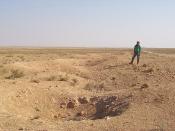People with disabilities in the past have commonly been limited to experiencing outdoor programs that were segregated to only include the disabled. According to Sugerman (1996), this has historically been the only solution for overcoming "environmental barriers such as transportation, architecture, economics, and public attitudes" (p. 44). Diversity within an adventure program can present new challenges for the participants as well as opportunities for growth.
Sugerman displays how most people don't want to participate in programs designed specifically for the disabled, but they are interested in programs that integrate people both with and without disabilities. Activities such as hiking, rock climbing, kayaking, canoeing, and camping provide the right scenario for a diverse group of individuals to overcome their fears and to conquer a goal.
The Wilderness inquiry is an example of a modern program that integrates its participants for outdoor adventures. Their Mission Statement goes as follows: "Through the medium of outdoor adventures, Wilderness Inquiry provides opportunities that integrate people in experiences that inspire personal growth and enhance awareness of the natural environment.
The underlying purpose of Wilderness Inquiry is to provide positive experiences that reduce stereotypes and empower people to push their perceived limitations" (www.wildernessinquiry.com). They offer adventurous activities such as Kayaking in Lake Superior or Dog sledding in the Superior National Forest of Minnesota. Most of the participants get involved because of the high adventure type of activities that are offered. The people that choose to participate commonly show that they want to push their boundaries and they are often trying an activity for the first time. This type of integrated environment provides a great learning experience for the disabled participants as well as for the other participants involved.
Instead of finding the weaknesses in the disabled participants, the groups find teamwork, cooperation and a greater sense of...


